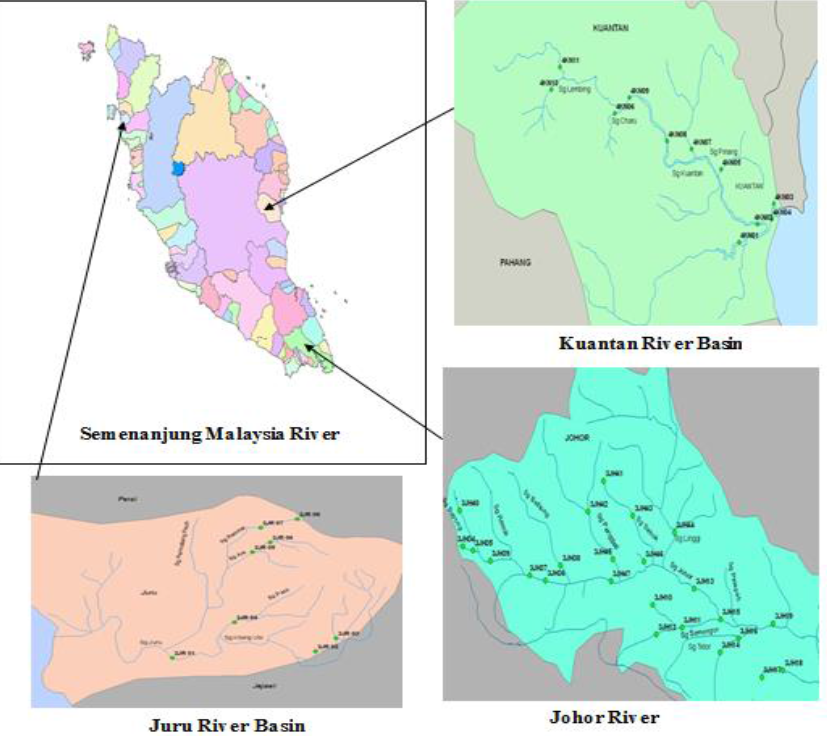Case study Malaysia: Spatial water quality assessment of Juru, Kuantan and Johor River Basins using environmetric techniques
DOI:
https://doi.org/10.17762/sfs.v7i2.117Keywords:
Cluster analysis, Principal component analysis, Discriminant analysisAbstract
This study investigates spatial water quality assessment of selected river basins in the three different states in Malaysia. Environmetric techniques namely, cluster analysis (CA), principal component analysis (PCA), and discriminant analysis (DA), were applied to study the spatial variations of the most significant water quality variables in order to determine the origin of pollution sources on water quality data of Juru River Basin, Kuantan River Basin and Johor River Basin. 13 water quality parameters were initially selected and analyzed. Three spatial clusters were formed based on CA, and these clusters were designated as high pollution source (HPS), medium pollution source (MPS), and low pollution source (LPS) at the three river basins, respectively. Forward and backward stepwise DA managed to discriminate water quality variables, respectively from the original 13 variables. The result of this spatial analysis assessment is supported by PCA (varimax functionality,) that was used to investigate the origin of each water quality variable due to land use activities. Thus, this analysis makes it possible to observe the significance of the pollutant sources which contribute to river pollution. Five principal components (PCs) were obtained for all HPS, MPS and LPS regions of all the three river basins, respectively. Pollution sources for the three river basins were mainly originated from industrial waste, municipal waste, domestics waste and also from agricultural runoffs. Finally, the environmetric techniques analysis manage to provide convincing result on the spatial variation of water quality in all the three studied river basins and this eventually will allow more effective and efficient river quality management activities.










